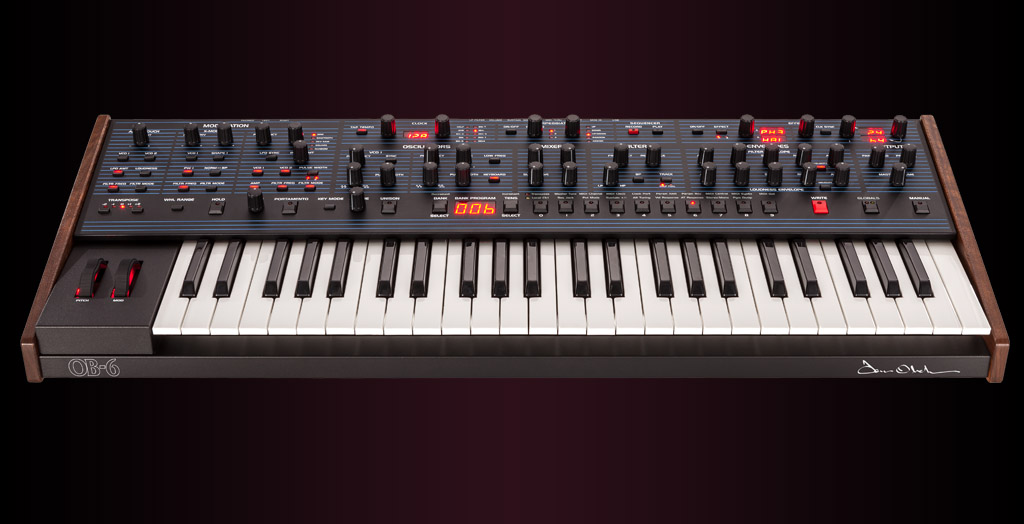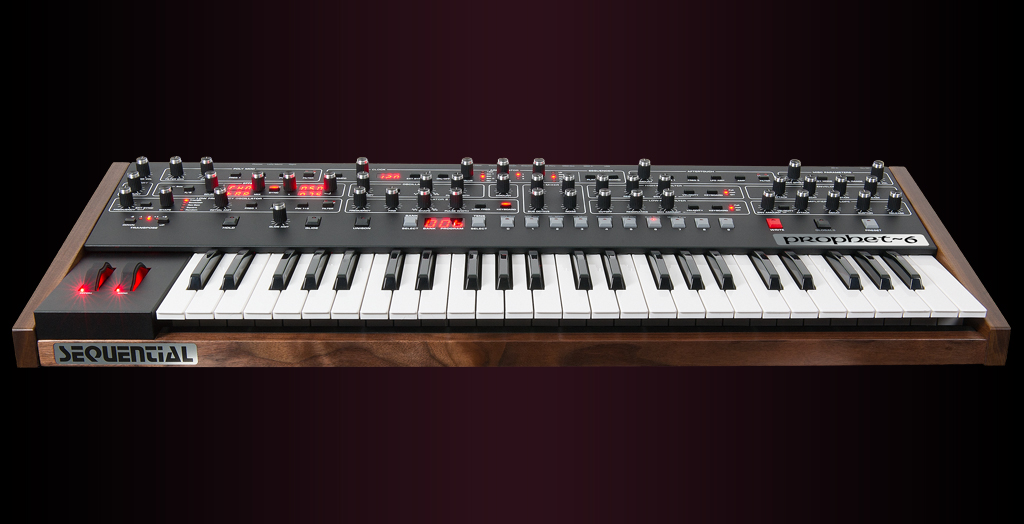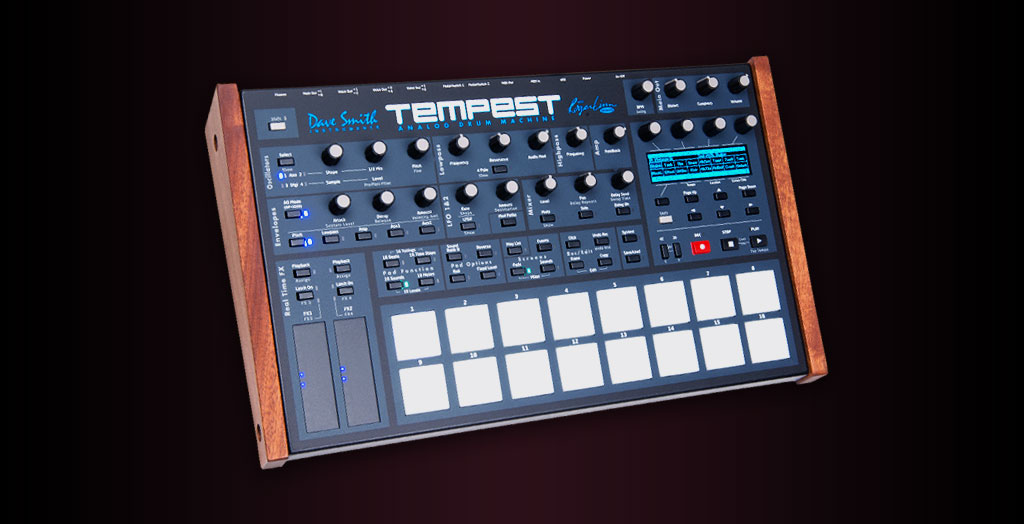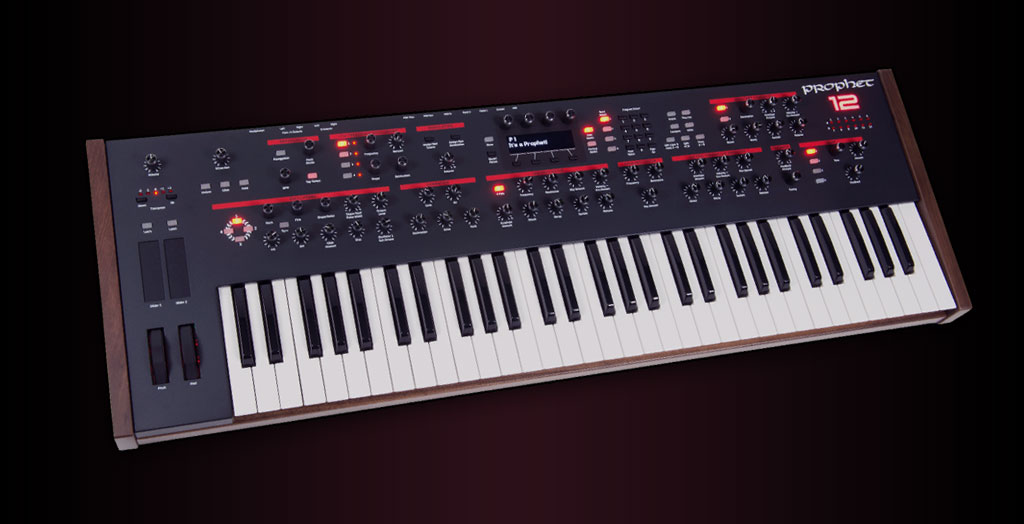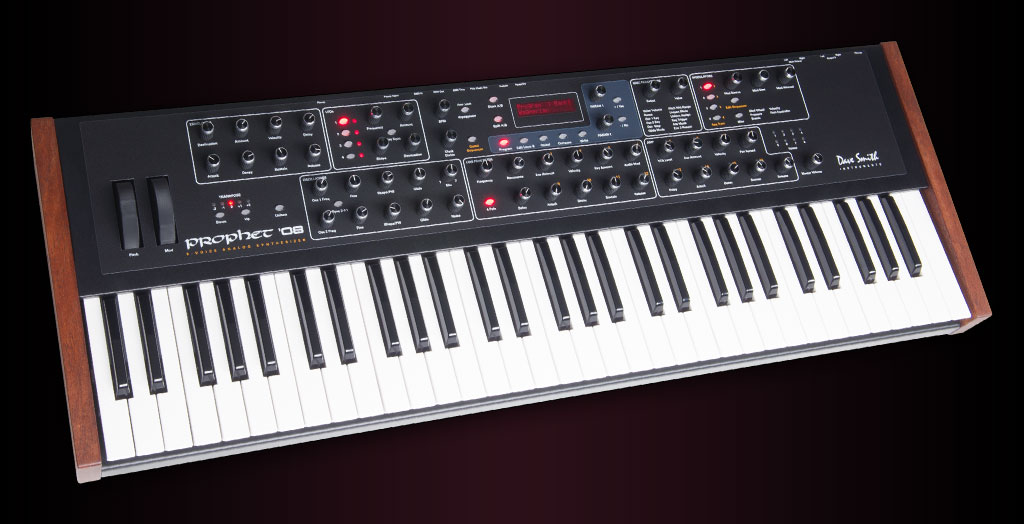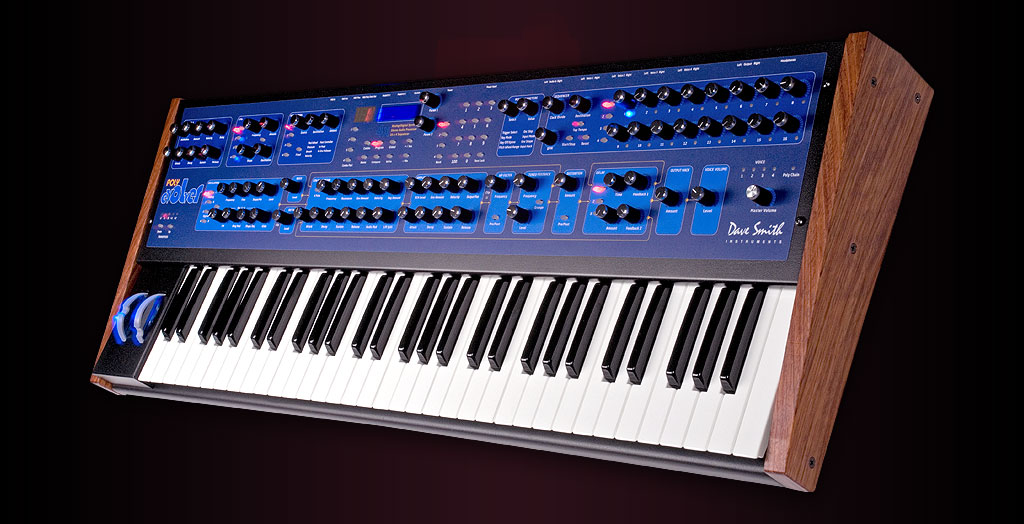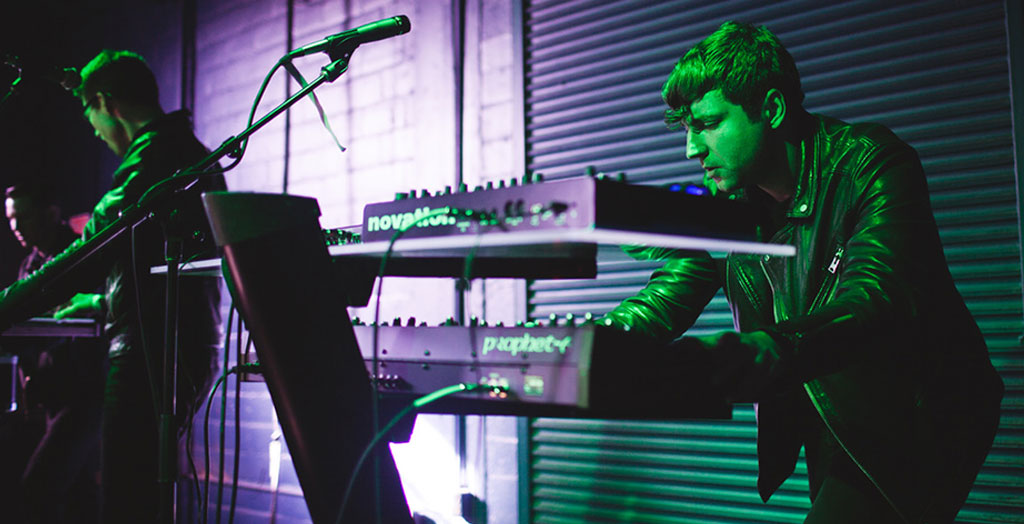
Featured Artist Matia Simovich
Gear Used
SEQUENTIAL INTERVIEW – MATIA SIMOVICH
A resident of the San Francisco electronic and experimental music circuit for nearly two decades, Matia Simovich’s productions and sound design have questioned the line between forward-thinking, avant pop and the depths of the underground. He honed his craft at the now-infamous Asphodel Studios/Recombinant Media Labs where, as an in-house producer, engineer, and sound designer, he collaborated with the likes of M.I.A., Keith Hillebrandt (Nine Inch Nails), and many others responsible for pushing the boundaries of the pop context. Never one to shy from the dark or the unorthodox, his production style is equally inclusive: hardware-centric and exudes the decadence and lushness of the past while integrating the precision and speed of today’s studio process. As the founding and principle member of INHALT, German for “content,” he defined this production style via several records put out by cult power house Dark Entries Records as well as Cleopatra Records. Most recently, he has collaborated with Peter Baumann (Tangerine Dream) on the Machines of Desire LP and has started a series of Artist Patch Bank libraries for various synthesizers.
We chatted with Matia about his music.
Your music has been described as “intelligent dance music.” Yet it also has a strong cinematic element to it and you’ve named the film soundtracks of John Carpenter as an influence. Where do those two streams come from? They’re very different.
They can be. Sometimes it’s hard for me to say outright because when I’m working on something I’m not usually sitting with an influence in mind. I think on a subconscious level maybe those things are unavoidable. You’re programmed from a very young age and you sort become aware of things around you, sounds and those kind of things, so it’s impossible for a creative person to say they’re beyond influence. What I tend to do is work with concepts. With INHALT I kind of have a running log of ideas that I want to communicate. But it doesn’t have to do with feelings so much. It’s very much rooted in post-structuralism and social critique. So I’m siting with those kinds of notions. Now, depending on the concept, it sometimes takes more of an atmospheric route or a more physical one or … so on and so forth. It’s funny how these initial concepts influence the final sound and the final composition. It’s a mystery to me because I don’t always know where a song is going to go. I may have a concept in mind and do everything I can to stay true to what I’m trying to communicate. But I also allow the song to fall into place and to be what it needs to be rather than forcing something to happen. I try to do things that are appropriate for the piece rather than “It’s going to be this and that’s the end of that.”
What was your musical education?
Well, I never went to school for any of this. I’m self taught. I grew up in a very musically conscious household. My dad and I love a lot of the same artists, like Depeche Mode and Kraftwerk and Tangerine Dream. When I was a kid, we listened to a lot of music together. But I don’t think that was enough to make me decide to produce it. I think when I was a teenager I really loved listening to music and I think hearing Kraftwerk for the first time and Frankie Goes to Hollywood… just sitting there and just being fascinated. It was like a big mystery! Like: “How do you do this?” It was so surreal and different and mysterious and unlike anything I had known before. I just had to figure out how it worked. I had no idea! This was before the internet and before access to that info-stream. But I knew that music was something that really resonated with me.
And I think that as I progressed from twelve to thirteen to fourteen to fifteen, it was a time when you really had to be interested, and had to seek things out, because they weren’t going to be readily available. I was just obsessed with trying to seek this music out. I remember staying up late listening, almost willing certain songs to happen on the radio or on MTV so I could take it all in. It was all a lot more mysterious. A lot more magical than it seems to be today and that made it more special. You really had to commit to music at that point. If you really cared about it, you had very specific transmissions that you had to show up for at a certain time and a certain place or you would miss them. So it really made you give a shit about the things that you were into. Because it was difficult to gain access, it made music even more important.
Generally speaking, what’s your approach to composing? Do you have a consistent process?
It changes per project. I write all kinds of songs. But some of the projects that I’m known for may be more definite in terms of what they’re communicating or the aesthetic. But on my own accord, I write all kinds of music. And it just so happens that the songs that are closest to my heart seem to be a kind of blend of really strong rhythm and a lot of melodic atmospheric components.
When I was working with Peter Baumann (Tangerine Dream) on Machines of Desire, before we even laid anything down, he was wanting to explore a certain kind of atmosphere. He was interested in almost symphonic music but done with electronics and with synthesizers and sampling. So since that was the concept I tried to sit with it. And also, as a fan of Tangerine Dream, I tried to have the attitude of: “What would I want Tangerine Dream to sound like right now?” — and let that be the guiding post but ultimately in support of everything Peter was doing.
So that’s probably why Machines of Desire sounds the way it does and why INHALT sounds the way it does. Some of these other things I’m doing now are a kind of a concept, regulating where things are going to go. The concept of the side project, Aphonia, I’m working on now is very long, extended, 12-inch, European… well, I wouldn’t call it dance music, but music for a club, and what my interpretation of that is. I like to work with these kind of ideas because they help me figure out what the actual workflow is going to be from start to finish.
So for example, for the piece you’re working on right now, do you start with a rhythm track and then start layering sequences?
It varies so much. A lot of the time, I start with the piano and block chords out. And often I’ll work out bass lines on an electric bass because it influences me to play differently. But most of the INHALT stuff I would say starts with a keyboard and some kind of click track or drum machine just running a simple beat and blocking the chords out and counting out verses and choruses. A very traditional musician’s way of doing things. Even for songs that you don’t hear a pad holding the chord or whatever, there’s still a chord structure. I’ll work this way often.
Other times, the Sfire remix is a good example. I sat with their arrangement and melodies, listened to them, figured out how to play them, to get a sense of where the chords were, then came up with my own melodies, and did some transpositions, and took it to a different key, all those kinds of techniques. But again, it came from sitting with something and just using a piano sound or whatever and blocking it out.
Sometimes I’ll turn on synthesizers and come up with some kind of rhythm structure and I’ll be working with sounds that are largely specific. For instance, on the song that I’m working on right now, “Samhain” for Aphonia, I wanted a very straightforward 808 kind of beat, and I wanted some Simmons drum kind of things in there to hint at the early Italo records, and I knew that I wanted a slightly darker take on Moroder in terms of the bass line. So I came up with the rhythm section first and started to build chords on top of that with sounds that were largely indicative of what they were going to be once the song was done.
So every piece is a bit different. I don’t have one definitive way of working. The only definitive part of my workflow is the fact that I segregate things into specific parts. When I’m writing, I’m not really thinking about recording so much. When I’m recording, that’s a different thing. After all of those processes, then I’m arranging. After that, I’m producing and doing effects and transitions and adding those kinds of elements, and then I’m mixing. So I segregate things into independent processes. Because I work alone a lot of the time this way I can have 100% focus on what it is that I need to do.
Do you have certain musical ideals? Certain things that you always strive for?
Yeah, to do the absolute best job I absolutely can, in every aspect of it. In the writing, the arrangement, the sound design, the production, in the mix. I strive for going beyond the limitation of either the technology or the situation and really trying to come up with something great. That’s what keeps me excited: “How can I make this better than everything I’ve made before?” And to be true to what’s coming out, and to whatever it is that I’m picking up on and channeling into the music. And to do that from a place of integrity. Those are the ideals.
Did working with Peter Baumann influence your way of doing things or looking at things compared to the way you worked prior to that experience?
Sure, every production brings its own set of lessons. And I think on that particular project, the sequencing side of things and the overall approach were most fruitful for me for future things I was doing after it. Peter has a particular way of working and he’s very talented in terms of being somewhat nonchalant about how he lays things down on tape. And I think because the vast majority of the things he’s done were done in a tape context, he transposed that attitude to working with Pro Tools in a digital environment. So things came out sounding much more organic, and less like you’re shifting around Lego blocks in Pro Tools.
It was useful seeing the way he makes things work in the context of an arrangement. A lot of times you would hear something and it would sound kind of weird on its own, but then when you hear it in terms of how he’s hearing it… once it’s been tracked in, in other words, it totally works. The takeaway for me was definitely seeing his approach to committing things to tape and lining things up to sound a certain way together. That sensibility was great because after that I was able to apply some of those ideas.
Do you keep up with the latest technology? And if so, did you sort of bring Peter up to speed on all of that? How did that work?
Yeah, part of our time working together, outside of the creative collaboration and the production and technical side of things was that I helped him get a sense of: “This is what has happened in the time that you haven’t been active in music, and these things are now possible.” But even more than that I helped give him a framework and suggested things I knew to be reliable and that I thought would work well with someone with his background. From there he started to explore technology more and find the things that he liked and experiment with during the course of production.
Was it ever intimidating working with someone whom you admired?
No, it’s only awkward if somebody else makes it awkward, honestly. I’ve been doing this professionally since I was about 19, which is when I had my first studio position in a full creative capacity. So you learn how to stay focused and how to be yourself, regardless of what your personal experience is with somebody’s music. I also think it’s important sometimes to separate personality from art. In professional settings that helps, because at the end of the day while the arts are still intertwined with personality and emotion — as art should be — in a project, you have a job to do, and you have to know what your role and purpose are within that project. And when you’re clear on that, I think everything takes a back seat as far as any kind of cultish admiration might go and the expressions of that.
I was originally hired by Peter because of my sound design sensibility and my sense of rhythm. I’m from the Balkans. I’m Serbian, and our traditional music is in 7/8 and kind of odd time signatures layered with 4/4. So I think in that regard I felt more comfortable with the collaborative dynamic.
How did you get started with DSI’s synths?
When INHALT started, there weren’t many choices for modern analog synthesizers as there are now. Therefore, I mostly relied on vintage equipment. Not for the sake of nostalgia, but out of necessity for the workflow and the sound quality. As time progressed and as more of our records came out, I had to find a way to authentically get our sound to the stage. Fortunately, DSI started making more polyphonic analogs that were new, stable, and most importantly, sounded as good as the gear we used to make our records. So it was an easy choice.
We rely on polyphonic analog synthesizers as they match our tonal and conceptual aesthetic often times better than monophonics. To be able to have a timeless analog polyphonic sound that is easy to transport and sounds absolutely stunning is such a remarkable thing. Not to mention the user interface. Everything is so logically laid out and all the parameter ranges are within comfortable limits that it’s almost effortless creating amazing patches, saving them, and recalling them night after night. The choice was clear and easy: DSI provides the tools I need, full stop.
How are you using your instruments?
I use our DSI gear both in the studio and on the stage. In the studio, the Prophet-6 or the OB-6 are the usual partners to bring on as “the” studio synths when I’m working on mix sessions at Different Fur Studios. Often times there will be last-minute overdubs and these synths are perfect for getting fast results that require little to no post processing. This was definitely the case when I worked with Peter Baumann on Machines of Desire. Because there were also last minute ideas happening when we took things to the big studio, I was able to very quickly record in ideas that were happening when inspiration struck during the mix sessions, but not sacrifice any of the magic sound quality. A lot of that material was also sequencer heavy, and because the OB-6 and the Prophet-6 both have a clock input as well as a fantastic step sequencer, it was very easy to sync things to tape, without MIDI, just by using a click track off of an Aux on the desk. More gear should have real world interfacing beyond MIDI.
For concerts, the OB-6 and the Prophet-6 are the backbone of the INHALT live show. They are incredibly compact and easy to fit into an ATA flight case and aren’t terribly heavy to cart around. When we support bigger acts like Skinny Puppy or Front 242, it’s very important to strike the stage quickly after our performance. Having synths that sound as good as these do but also weigh considerably less than vintage polyphonics makes this transition a lot easier. Also, since all of the parameters are right in front of you, it’s effortless to be able to make tweaks while you play. In one of our songs, I’m manipulating the X-Mod of the OB-6 and it’s a very timed sweep and has to happen a specific way. Having the control right there in an easy to reach position makes this maneuver possible during the heat and intensity of a proper show.
From a writing and composition standpoint, the OB-6 and Prophet-6 are sort of the perfect partners because of the evenness of the sounds. It’s very easy to work out chords, melodies and bass lines on the synth itself partly because the key action of the keyboard is very playable and because the various frequency ranges don’t muddy. If I have a sort of “writer’s string patch” that has a pronounced bottom note, it’s very easy to play the bass line on the bottom octave and the mid-heavy chords at the same time and not hear a smearing or a muddying. There’s a lot of digital gear that fails this miserably.
What is it that you particularly like about the Prophet-6 and OB-6?
With the OB-6 and Prophet-6 (and Pioneer AS-1) it’s definitely the sound quality and the programmability. One of my favorite vintage synths is the Oberheim OB-8 because it has this “Midnight Music” sound quality to it. It reminds me of the songs played on European radio stations in the late 1980’s, very late at night. Sort of like the slower and smoother Italo Disco and very moody electronic pop music. The OB-6 is able to capture this vibe effortlessly. But it also goes beyond it because of the multimode filter. The AS-1 is like a body music machine. It’s very easy to create very aggressive, pumping, chugging EBM type staccato lines with little effort. The sound has a mid range punch to it that I really like and that honestly a lot of gear doesn’t do as much these days.
As far as programmability, it’s rapid fire creating sounds. For starters, these synths don’t sound bad at any setting, so coming up with good sounding patches is very easy and fast. But the interface and layout, even the menu on the Pioneer AS-1, is very logical. As a sound designer I can come up with a vast array of sounds in very little time. Since I’ve just recently launched several INHALT Artist Sound Banks for the Prophet-6 and the OB-6, this is very important to me in order to meet deadlines and get the files uploaded to our shop, but not sacrifice anything in terms of sound quality and usability of the patches.
DSI feels like a company with a greater musical heritage in mind. I’m a musician on the fringes of accessibility, but a deep user of this gear. I don’t feel like my needs, as alternative as they might be, are glossed over in favor of mainstream appeal, because I feel DSI, as a company, acknowledges many styles and needs beyond Top 40 (whatever that means these days). And it’s no wonder, when you consider that for every artist within R&B or pop that used Sequential gear, you also had the outsiders like Alan Howarth, Die Krupps, Fad Gadget, Futurisk or even Wally Badarou pushing the limits of the gear and building a greater tonal and musical vocabulary with it. DSI gear doesn’t feel like “McSynth” and that’s why I’m very honoured to have contributed my style to the many factory banks I’ve worked on and to gig and play concerts with this gear regularly.
So, a massive shout out to the whole gang! Thank you for making INHALT feel like family over the past several years. Your kindness, support, and friendship is immensely and sincerely appreciated by all of INHALT.
Any specific techniques you’d like to share?
The analog jet phaser string patch! Set the LFO to sweep the cutoff and the filter type at the same time on the OB-6. Works even better on the Pro 2 because you can use a second LFO to upsweep the low pass 24db filter while the SEM filter sweeps down.
LINKS
MUSIC
“Occupations” on YouTube
Peter Baumann – Valley of the Gods
Sfire – Sfire 3 (INHALT Seduction Remix)

